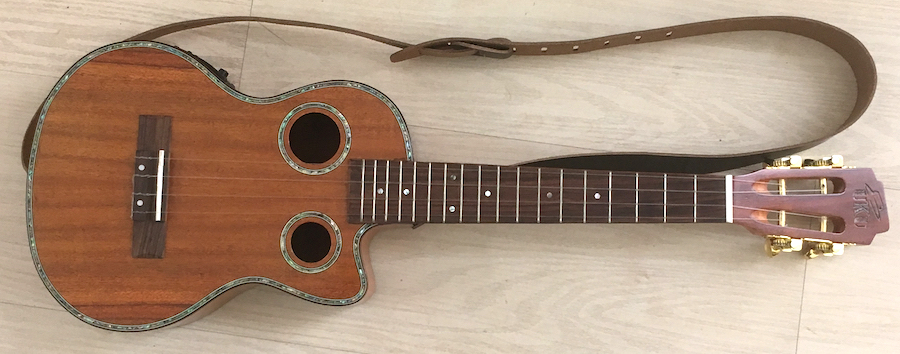I understand that it depends on your mood, but I'm curious which laminates you have! I am certainly finding in my YT listening that I am frequently drawn to laminate ukes, not because I'm shopping for laminates, but just that those are the videos that make me stop and look up which uke they're using. Now I'm looking for all the real-world insight into this that I can get.
Hi Tim.
I'm not one to keep a lot of ukes around. Often I have just one then sell it or pass it on and get another. I've mostly bought inexpensive ukes over the past few years. I have had some higher end stuff though in the past. I'll offer up some thoughts...
I will mention Kala as an example for one thing. I've played on some of their lower end mahogany laminates and also the laminate ebony which costs more. You are really paying for the look of the wood on those exotic wood laminates. The outer layer is VERY, very thin. It's not going to make any difference in tone. I thought they sounded sort of neutral with some warmth. They don't have the volume or zing of a solid wood. That often works very well for me. I don't need volume and like a warmer sound often...and to my ears laminates can be less harsh sometimes.
I have had a Kiwaya laminate soprano (KS1 I think) that is very thin laminate. Many here rave about them. It's more expensive than something like the Kala and is made in Japan. I found it to be a nice sounding instrument too. Most will put it well above something like a Kala laminate. I will say the construction and build quality was certainly better. It is built lighter. Not all laminates are created equal for sure. I could've been fine with either as far as sound goes if needed, but the edge would go to the Kiwaya.
I'm a fan of the Flight TUS35 ukes that go for $50. They are plastic with laminate wood top and sound better than I would've guessed. I think they're one of the best deals going... I just don't know how well the frets hold up to years of play...but at $50...maybe not a concern.
Along those lines, if you're open to alternative materials I think the Enya Nova (carbon fiber mixed with plastic) and the Outdoor Ukuleles are both quite nice. I enjoyed playing on those.
I'm a fan of the Enya instruments I've played. I have owned and played on their HPL laminate. It wasn't loud, but had a nice sound and the factory setup was very good. That is rare on a factory uke. The price was great for all included too. I also have a guitar from them that is quite nice for what it is. It's also made of their HPL...which originally was used by Martin Guitars.
I haven't played an all laminate Ohana but would expect those to be nice based on my experience with their solid top with laminate back and sides ukes.
I think there are probably a lot of ukes I haven't played that I'd be fine with sound-wise. Playability and comfort are huge for me..so it's not just about sound. Now, my first stop for uke shopping is Mim's Ukes, unless she doesn't have what I'm looking for. She does a great setup and has excellent service. I do setup work too, but it's nice to not have to.
If you don't know of gotaukulele I would recommend looking that up. Baz does some great reviews in writing and on youtube of quite a few models. I won't say I always agree with him, as we all have our own opinions but I do agree with him a good deal and think he's an excellent resource. He is also a member here on UU.
I think you have to keep in mind that what you hear in person and what you hear on youtube aren't always the same though. Some people, like Cory from HMS, can make any uke sound good in demos...because he's a fantastic player with great touch. He doesn't overplay the uke to where it distorts, etc.
Ultimately it's all about your ears and preferences.
I hope you find some ukes that you love.
That's my more than 2 cents.


